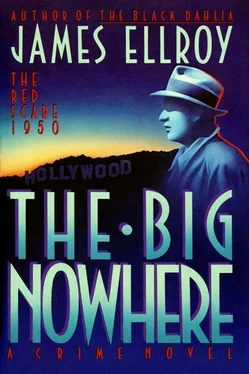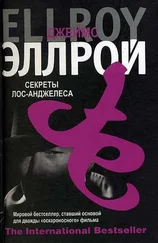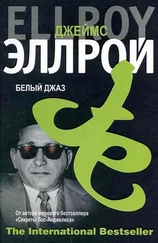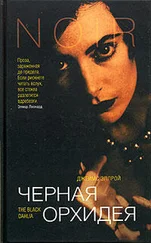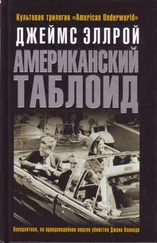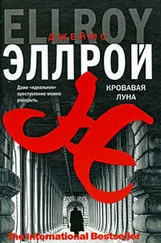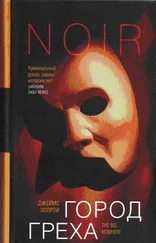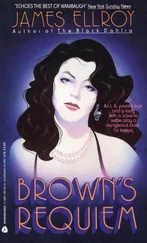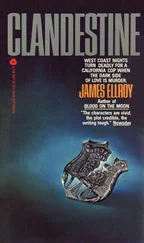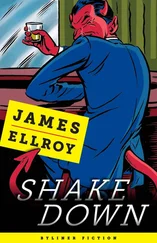And he had a monster hangover.
And his back ached from boozy catnaps on Mal Considine’s floor.
They’d been up most of the night, planning. He called Dave Kleckner in Ventura — Audrey was safely tucked in at his pad. He’d called Johnny Stomp with details on the Minear squeeze and gave Mal the lowdown on Gene Niles. Mal said he’d tagged him as the killer on a hunch — that payback for Danny was so antithetical to his style that he knew the debt had to be huge. Mal got weepy on the kid, then went loony on Dudley Smith — Dudley made for José Diaz, Charles Hartshorn, suppression of evidence and a fuckload of conspiracy raps, Dudley sucking gas up at Q. He never made the next jump: the powers that be would never let Dudley Smith stand trial for anything — his rank, juice and reputation were diplomatic immunity.
They talked escape routes next. Buzz held back on his idea — it would have sounded as crazy as Mal taking down Dudley. They talked East Coast hideouts, slow boats to China, soldier of fortune gigs in Central America, where the local strongmen paid gringos good pesos to keep the Red Menace in check. They talked the pros and cons of taking Audrey, leaving Audrey, the lioness stashed someplace safe for a couple of years. They came to one conclusion: he’d give payback another forty-eight hours tops, then go in a hole somewhere.
A classroom bell sounded; Buzz got pissed: Mary Margaret Conroy would never blab, only confirm by her actions — all he was doing was humoring Mal’s hump on Dudley. “Art of the Mayans” adjourned in a swirl of students, Mary Margaret the oldest by a good ten years. Buzz followed her outside, tapped her shoulder and said, “Miss Conroy, could I talk to you for a second?”
Mary Margaret turned around, hugging her armload of books. She eyed Buzz with distaste and said, “You’re not with the faculty, are you?”
Buzz forced himself not to laugh. “No, I’m not. Sweetie, wouldn’t you say Uncle Dudley went a bit too far warnin’ José Diaz away from you?”
Mary Margaret went sheet white and passed out on the grass.
Dudley for Diaz.
Buzz left Mary Margaret on the grass with a firm pulse and fellow students hovering. He got off the campus quick and drove to Ellis Loew’s house to play a hunch: Doc Lesnick’s absence while UAESer lunacy raged on all fronts was too pat. The four Bureau dicks trying to find the man were filing reports at the house, and there might be something in them to give him a spark atop the hunch and the flicker that caused it: all the psych files ended in the summer of ’49, even though the brain trusters were still seeing Lesnick. That fact reeked of wrong.
Buzz parked on Loew’s front lawn, already crowded with cars. He heard voices coming from the back yard, walked around and saw Ellis holding court on the patio. Champagne was cooling on an ice cart; Loew, Herman Gerstein, Ed Satterlee and Mickey Cohen were hoisting glasses. Two Cohen boys were standing sentry with their backs to him; nobody had seen him yet. He ducked behind a trellis and listened.
Gerstein was exulting: yesterday’s picket brawl was blamed on the UAES; the Teamster film crew leaked their version of the riot to Movietone News, who’d be captioning it “Red Rampage Rocks Hollywood” and shoving it into theaters nationwide. Ellis came on with his good news: the grand jury members being appointed by the City Council looked mucho simpatico, his house was packed with great evidence, mucho indictments seemed imminent. Satterlee kept talking about the climate being perfect, the grand jury a sweetheart deal that was preordained by God for this time and place only, a deal that would never come again. The geek looked about two seconds away from asking them to kneel in prayer; Mickey shut him up and not too subtly started asking questions about the whereabouts of Special Investigator Turner “Buzz” Meeks.
Buzz walked to the front of the house and let himself in. Typists were typing; clerks were filing; there was enough documentation in the living room to make confetti for a thousand ticker tape parades. He moved to the report board and saw that it had been replaced by a whole wall of photographs.
Federal evidence stamps were attached to the borders; Buzz saw “SLDC” a dozen times over and looked closer. The pics were obviously the surveillance shots Ed Satterlee was trying to buy off a rival clearance group; another scope and he noticed every photo was marked SLDC, with ’43 and ’44 dates tagged at the bottom, the pictures arranged chronologically, probably waiting for some artwork: circling the faces of known Commies. Buzz thought: Coleman, and started looking for a face swathed in bandages.
Most of the photos were overhead group shots; some were enlarged sections where faces were reproduced more clearly. The quality on all of them was excellent — the Feds knew their stuff. Buzz saw some blurry, too white faces in the earlier pics, crowd shots from the spring of ’43; he followed the pictures across the wall, hoping for Coleman sans gauze and dressings, an aid to ID the rat killer in person. He got bandage glimpses through the summer of ’43; little looks at Claire De Haven and Reynolds Loftis along the way. Then — blam! — a Reynolds Loftis view that was way off; the handsome queer too, too short in the tooth, with too much hair.
Buzz checked the date — 8/17/43 — rechecked the Loftis glimpses, rechecked the clothes on the bandaged man. Reynolds had noticeably thinning hair throughout; the too young Reynolds sported a full head of thick stuff. In three of the overhead shots, bandage man was wearing a striped skivvy shirt; in the close-up, too young Reynolds was wearing the same thing. Juan Duarte had told Mal that Reynolds’ “kid brother” looked just like him — but this man was Reynolds in every respect except the hair, every facial plane and angle exactly like his father — a mirror image of Daddy twenty years younger.
Buzz thought semantics, thought “just like” might be an uneducated greaseball’s synonym for “identical twin”; Delores Masskie called the resemblance “rather close.” He grabbed a magnifying glass off a typist’s desk; he followed the pictures, looking for more Coleman. Three over he got a close shot of the boy with a man and a woman; he put the lens up to it and squinted for all he was worth.
No burn scars of any kind; no pocked and shiny skin; no uneven patches where flesh was grafted.
Two photos over, one row down. November 10, 1943. The boy standing sideways facing Claire De Haven, shirtless. Deep, perfectly straight scars on his right arm, a row of them, scars identical to scars he saw on the arm of an RKO actor who’d had his face reconstructed after an auto wreck, scars that actor had pointed to with pride, telling him that only Doctor Terry Lux did arm grafts, the skin there was the best, so good that it was worth upper body tissue removal. The actor said that Terry made him look exactly like he did before the accident — when he looked at himself even he couldn’t tell the difference.
Terry Lux dried Claire De Haven out at his clinic three times.
Terry Lux had workers who slaughtered chickens with zoot sticks.
Terry Lux told him Loftis used to cop H for Claire; Marty Goines was snuffed by a heroin overjolt. Terry Lux diluted the morphine for his dope cures on the premises at his clinic.
Buzz kept the magnifying glass to the wall, kept scanning. He got a back view of Coleman shirtless, saw a patchwork of perfectly straight scars that made him think of zoot stick wounds; he found another set of group shots that looked like Coleman fawning all over Claire De Haven. Hard evidence: Coleman Masskie Loftis was plastic surgery altered to look more like his father. He resembled his father enough to ID him from Delores’ pictures before; now he was him. His “special protection” from Dudley Smith was being disguised as Loftis.
Читать дальше
